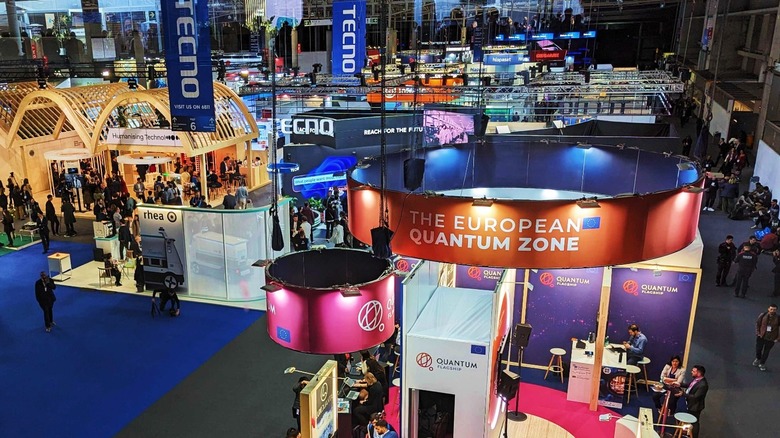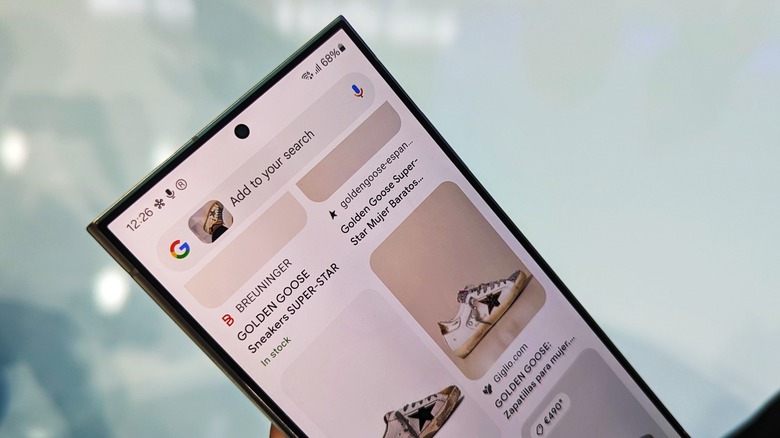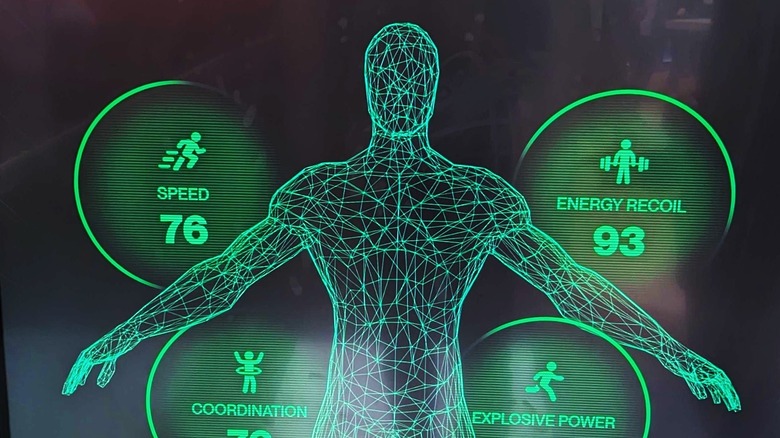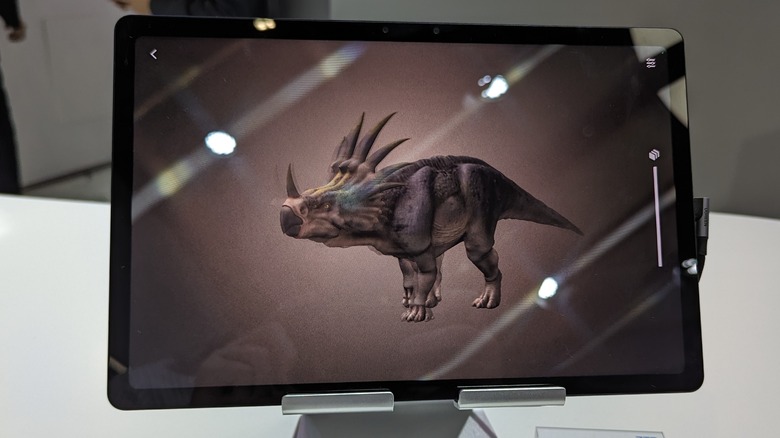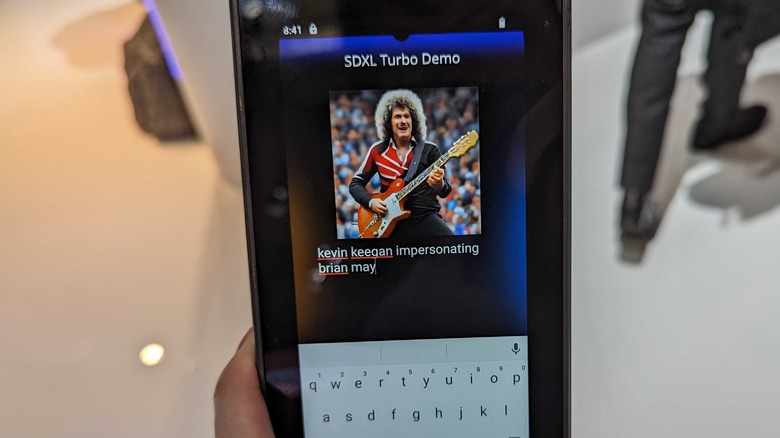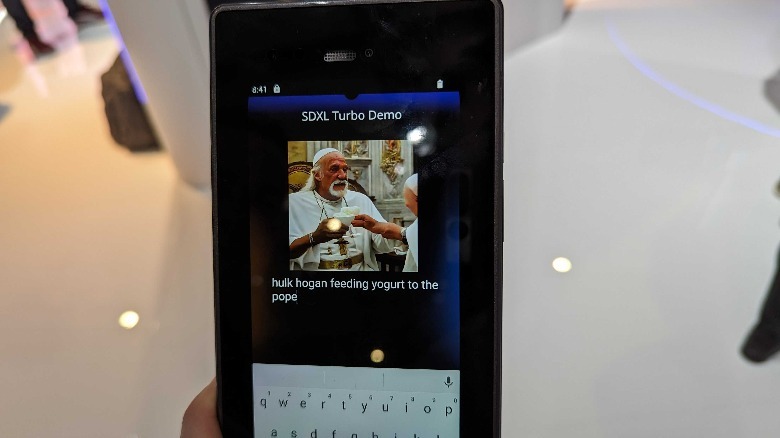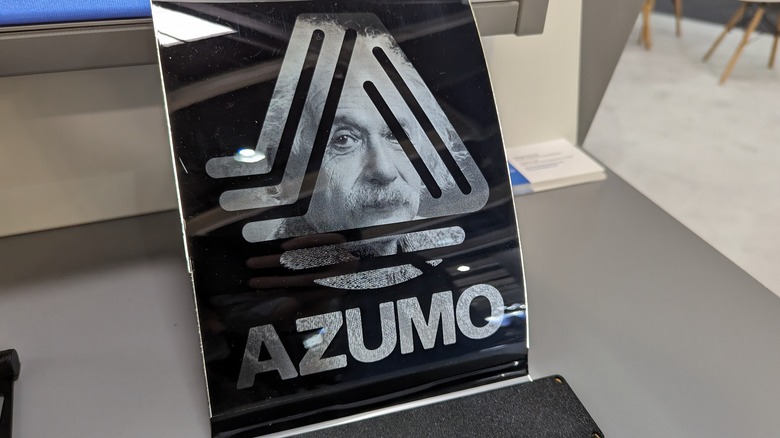Best Moments Of MWC 2024 Day 3: A Rendered Rockstar And Smart Athletic Assessments
Although MWC is drawing to a close with just half a day left, there are still plenty of exciting things to see at the conference. The trade show has already given us a glimpse into the future of transportation, a transparent laptop, and more takes on AI than we even care to remember — but it still has plenty more to offer. It also has a lot more in the way of AI, as that is still the next big thing in the world of tech.
While this may be our last daily report from the event this year, there are still some takes on the conference as a whole yet to come. This includes our final best-of list, as well as a more detailed look at the best and worst uses of AI this year. But for now, if you're wondering how Samsung's jab at on-device AI holds up, if the bloke SlashGear has covering this event is in any way athletic, or how the Pope would look should he accept yogurt from Hulk Hogan, then you're in the right place. All of these questions, and more, will be answered in the next few hundred words.
Samsung's AI gambit
If you follow tech news, Samsung's decision to dive heavily into AI may not shock you. It's a strategy adopted by most of its rivals and is widely seen as the next leap forward in cellular technology. The South Korean company's AI offerings closely mirror those of companies like Google, though Samsung believes it can do it better. In some cases, that belief is well founded.
The ability to conduct a phone call with someone who speaks an entirely different language, admittedly with a slight delay, is truly a wonder of the modern age. Similarly, the option to take a photo, highlight something that catches your interest, and receive more information about it or even a link to purchase it is the stuff of science fiction. As with most AI-based programs, there are some kinks to work out. But Samsung's foray into the next big thing is about as good as you'd expect from one of the world's leading tech companies.
Intel streamlines athlete assessments
At the age of 33, I'll admit I'm a bit of a mess. The press trips and decent Christmases have affected my waistline, and the mostly sedentary job has all but destroyed my cardio capabilities. Still, Intel has managed to show me all hope is not lost. It has a tool designed to measure the physical abilities of athletes. It can also be used for normal humans, though this requires you to be honest on a survey. After filling in your details and shortcomings, you stand in front of a camera and perform a set of simple exercises.
You jog on the spot, jump from side to side, perform some kind of explosive squat, and hit a bunch of dots on a screen. Then, the computer gauges your fitness level. I received a flattering score of 77, which would have been better had the cognitive side of things not let me down. Said cognitive abilities are naturally in the toilet after three days at a fairly intensive trade show. Still, it's a pleasing ego boost, especially when my right knee refuses to shut up about how awful its life is.
An eyewear-free 3D tablet
Glasses-free 3D is nothing new — Nintendo's 3Ds console was riding that wave more than a decade ago. But being new doesn't really matter if your product is better than its competitors. That strategy worked for Apple and could work for ZTE and its Nubia Pad 3D II — which, as the name suggests, is the company's second 3D tablet. This device isn't perfect by any means, but it does offer a great take on glasses-free 3D. It uses technology similar to the screen of the Nintendo 3D a while back.
If used as intended, images of dinosaurs, robots, and various other objects will leap out from the screen and assault your visual sense. It uses cameras to track eye position and adjust its display accordingly. Those same cameras — and the ones on the back — can also be used to shoot 3D content. In terms of drawbacks, you do need to find the correct viewing angle if you don't want the tablet to look awful. Pick the right spot, you get very accurate 3D; the wrong spot will give you a headache. Movies played on the device are also closer to 2D puppet shows than they are an immersive 3D experience.
The best on-device AI we've seen
AI in general, and on-device AI specifically, is everywhere at MWC. However, despite Samsung, Qualcomm, and Dell all putting forward strong efforts, MediaTek has the best independent AI hands-down. In addition to running on a phone, the program is capable of generating a new image with each letter typed, allowing you to tune your generation along the way. It uses the open-source model Stable Diffusion as many on-device products do.
Aside from the novelty of word-by-word generation, MediaTek's effort is far ahead of the pack in one important way: it gives you what you ask for with no tweaking needed. Our suggestions like Hulk Hogan feeding yogurt to the Pope, an obese marmoset playing table tennis with a shoe, and perhaps the weirdest of all, "Kevin Keegan impersonating Brian May," were rendered close to perfectly. Its ability to render random public figures with surprising accuracy is particularly impressive.
You can, of course, achieve amazing results on Stable Diffusion if you combine the correct settings with some trial and error, but this requires no effort and gets so close it almost hurts. I've seen journalists and influencers almost beg to get their hands on a device that can run this. It's that good. MediaTek only has about three of them. I hope there are more soon.
The tech behind Lenovo's Clear Laptop
An Illinois-based company named Azumo has developed what appears to be a thin sheet of plastic that reacts very well to light. It's a key component in Lenovo's transparent laptop, allowing the keyboard section to be totally transparent while also being capable of shining brightly when needed.
Azumo's product also has several applications in the automotive industry: it allows manufacturers to add a near-invisible (aside from the parts they want to be visible) layer to their in-car tech. Imagine Rolls-Royce's starry ceiling on wood or a moon roof, or a solid walnut center panel in a Bentley that can still present the same options as a plastic nightmare. The company is working with a number of "A Tier" European auto manufacturers. The names haven't been disclosed, but this is tech you could see in your high-end car at some point in the not-too-distant future.
